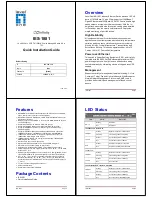
Table 240: PVSTP/PVRSTP Statistics Fields
Field
Description
Fast Backbone
Transition via Fast
Backbone
Number of fast backbone transitions.
Inferior BPDUs
Received
Number of the received inferior BPDUs.
RLQ Request PDUs
Received
Number of the received RLQ request PDUs.
RLQ Response PDUs
Received
Number of the received RLQ response PDUs.
RLQ Request PDUs
Sent
Number of the sent RLQ request PDUs.
RLQ Response PDUs
Sent
Number of the sent RLQ response PDUs.
Fast Uplink
Fast Uplink Transitions
Number of the fast uplink transitions.
Proxy Multicast
Addresses Transmitted
Number of the transmitted proxy multicast addresses.
Click
Refresh
to update the screen with most recent data.
Mapping 802.1p Priority
The IEEE 802.1p feature allows traffic prioritization at the MAC level. The switch can prioritize traffic
based on the 802.1p tag attached to the Layer 2 frame. Each port on the switch has multiple queues to
give preference to certain packets over others based on the
criteria you specify. When a packet is
queued for transmission in a port, the rate at which it is serviced depends on how the queue is
configured and possibly the amount of traffic present in the other queues of the port. If a delay is
necessary, packets get held in the queue until the scheduler authorizes the queue for transmission.
Use the 802.1p Priority Mapping page in the Class of Service folder to assign 802.1p priority values to
various traffic classes on one or more interfaces.
To display the page, click
Switching
>
Class of Service
>
802.1p
in the navigation menu.
Table 241: 802.1p Priority Mapping
Field
Description
Interface
The interface associated with the rest of the data in the row. The Global entry represents the
common settings for all interfaces, unless specifically overridden individually.
Priority
The heading row lists each 802.1p priority value (0–7), and the data in the table shows which
traffic class is mapped to the priority value. Incoming frames containing the designated
802.1p priority value are mapped to the corresponding traffic class in the device.
Configuring Switching Information
ExtremeSwitching 200 Series: Administration Guide
236
















































